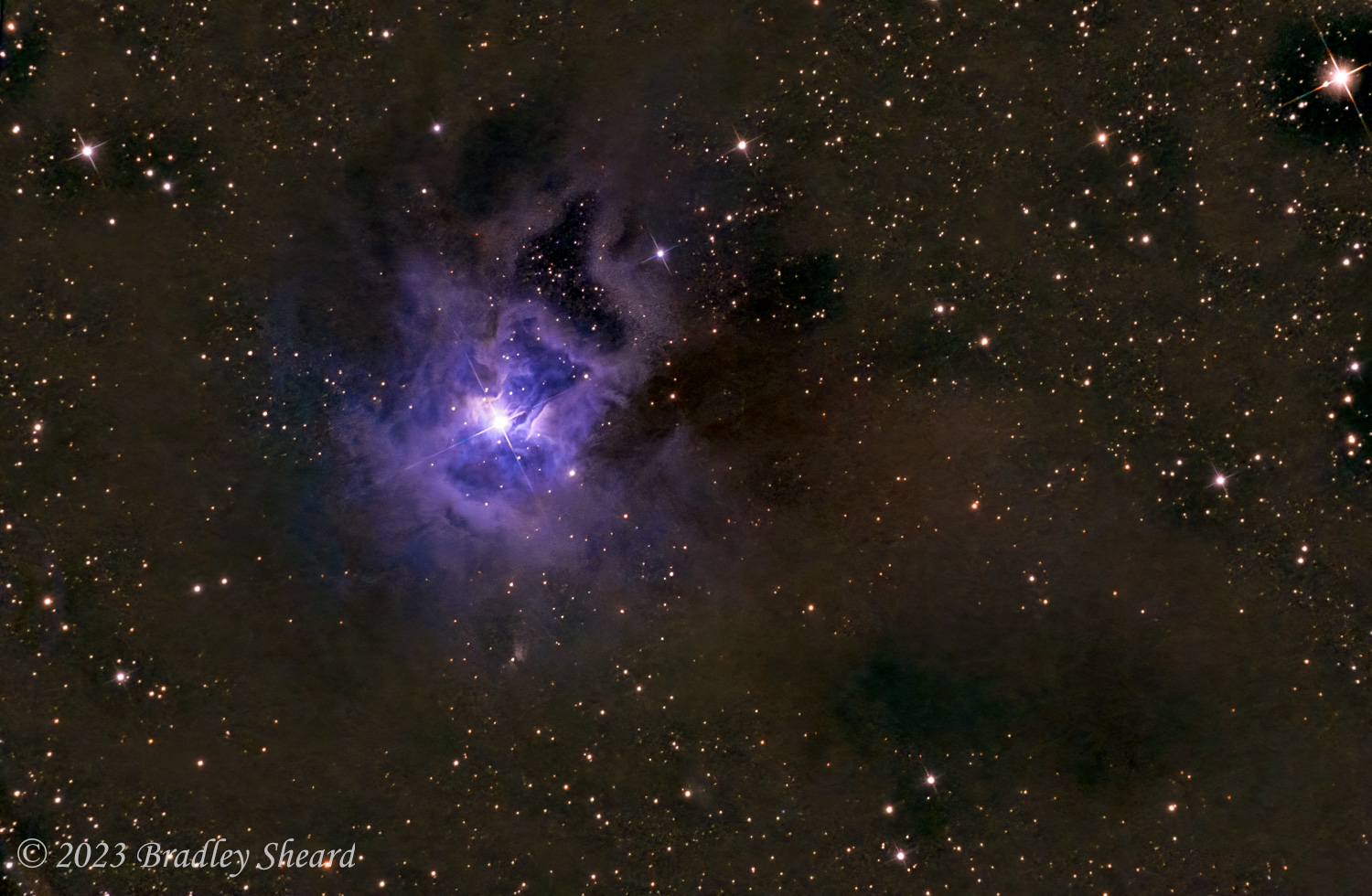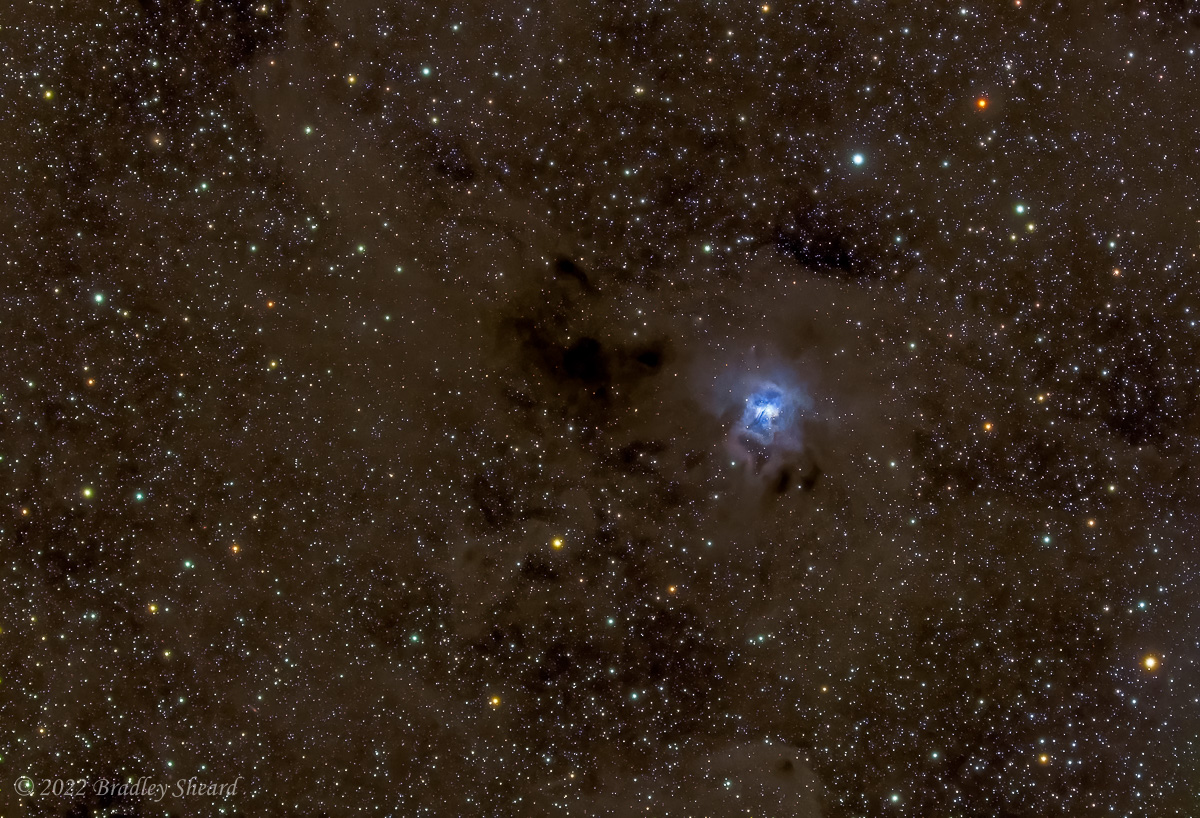"Iris Nebula" (NGC 7023) | |||
| « Previous | Back to Astrophotography Gallery | Next » | |
The 'Iris Nebula' (NGC 7023) is a reflection nebula located in the constellation Cepheus in the Northern sky. A reflection nebula emits no light of its own (as does an emission nebula), but is visible due to reflected light from a star (SAO 19158 / HD 200775) embedded within the nebula. The star lights-up the surrounding dust, and the nebula generally takes on a blue color much like earth's sky looks blue, due to sunlight scattering off atmospheric dust. Distance estimates of the nebula by the Hipparcos satellite put it at approximately 520 pc (1696 light years). | |||
 | |||
| Optics: | 8-inch RC telescope | ||
| Camera: | QHY268M monochrome CMOS camera | ||
| Exposure info: | ~10.5 hours total exposure / 10 min subs | ||
| Filters used: | Astronomik RGB and Optolong LPRO-2 light pollution filter | ||
| Date: | July 2022/2023 | ||
| Processing: | Pixinsight-->Photoshop-->Topaz denoise AI-->Lightroom | ||
 | |||
| Optics: | William Optics Star 71 Petzval refractor | ||
| Camera: | ZWO ASI1600MM monochrome camera | ||
| Exposure info: | 16 hours total exposure | ||
| Filters used: | Astronomik RGB and Optolong LPRO-2 light pollution filter | ||
| Date: | September/October 2020 | ||
| Processing: | Pixinsight-->Photoshop-->Lightroom | ||
The image above was taken through broadband filters (Red, Green and Blue) with a monochrome camera and assembled into a visible light (RGB) image, and thus represents the 'true colors' (at least as true as my processing skills allow). The challenge here was to try and capture the faint clouds of dust in the region surrounding the blue reflection nebula (colored roughly brown in this image). I have seen many images of this region on the internet, most of which I'm sure were taken from very dark sky sites. This started me wondering if it was even possible to capture these faint dust clouds from suburban skies suffering from extreme light pollution (looking at dark sky maps, I live right in the middle of a 'red zone' that seems to be about Bortle 7). By shooting only on nearly moonless nights, using a light pollution filter and accumulating a lot of subframes for stacking, I managed to come up with this image. Not nearly as good as other images of this region that a simple internet search will bring, but you can see the dark dust clouds in the surrounding region, so I consider this image a success! | |||
REFERENCES
1. Kohler, Habart, Arab, Bernard-Salas, Ayasso, Abergel, Zavagno, Polehampton, van der Wiel, Naylor, Makiwa, Dassas, Joblin, Pilleri, Berne, Fuente, Gerin, Goicoechea and Teyssier, "Physical Structure of the Photodissociation Regions in NGC 7023." Astronomy and Astrophysics, November 2018